| Zeitschrift Umělec 2001/3 >> Kinkade superstar / The Simple Art | Übersicht aller Ausgaben | ||||||||||||
|
|||||||||||||
Kinkade superstar / The Simple ArtZeitschrift Umělec 2001/301.03.2001 Marisa Příhodová | rezension | en cs |
|||||||||||||
|
"Standing diametrically opposite an artist like Veronika Drahotova is the man who is America’s most collected living artist. Thomas Kinkade (also known as The Painter of Light) is an American success story...and an art tragedy. Basically, you can’t avoid bumping into Thomas’ work even if you try and you can “acquire” the fantasy almost everywhere. It’s in shopping malls and in the “galleries” that sell his prints and endless re-prints nextdoor to hair accessory boutiques for teens, and on over 500 different websites dedicated to the propagation of his “work.” Thomas has apparently sold “countless millions of prints and paintings worldwide.” Primarily a painter, Thomas’ heavily romantic, sickly color-saturated cottages and winterscapes contrast wildly with Drahotova’s subtle images, leading “collectors” up a very different kind of
garden path. Thomas is portrayed as a typical good American. He was born and raised in a small California town. He married his childhood sweetheart and they have four children. He even dedicates works to his wife and family, hiding their names within the images. But Thomas’ work doesn’t just bring happiness to his own family, oh no: “His work brings hope and joy to millions each year.” He seems perfect in almost every way, which may account for his latest Perfect series of paintings. “The Perfect Red (or yellow) Rose,” “The Perfect Summer Day,”….yes, you too can purchase the perfect existence and world that Thomas lives in and creates. He paints utopian-style upper-class homes and houses with flower-crammed gardens, with even the odd deer or two to complement his Bambi-land American landscape of prosperity. He paints an idyllic past (somewhere around the turn of the lastcentury) in order to sell to the present. It is a world which doesn’t exist, where even society doesn’t exist (maybe simply due to a lack of figural painting skills). However, the exclusion of any identifiable human subject allows the viewer to become completely lost in the image, lost to the point of imagining oneself occupying that lovely home in that perfect world. Nowhere here will you find the ghettos of America, barred windows, or gated-community living. The image of “The Gate” does recur frequently in his paintings, but more as a symbol of entry or passage than of restriction or prohibition. A complete dissolution of reality is what conceptually defines and shapes each Kinkade work. Thomas is also referred to as the “painter-communicator.” This isn’t an artist who simply paints nice landscapes for enjoyment; this is someone who is trying to get through to his art “collectors.” “He is a devout Christian and credits the Lord for both the ability and the inspiration to create his paintings.” So, with God-given talent handed down from the heavens, “each painting is a quiet messenger in the home.” Like putting a crucifix around the neck of your living room, you can prove your faith simply by hanging up one of his art works. The “Kinkade Glow” as it’s been termed, is then put forth as the light of Jesus shining through each window of these flawless homes, making Thomas’ paintings holy relics in their own right. Thomas is also a published author spreading his philosophy on how to lead The Simpler Life. One of the main points he expresses in his book is that “true joy is found in the foundations of life, not in the frills we attempt to add.” Yet one begins to question what those “foundations” can be when his work is found on mugs, Bible book covers, mouse pads, Afghan throws, calendars, puzzles, and countless other unnecessary “frills” that invade, clutter, surround and “decorate” innumerable American homes. Some Kinkade fans spend their life savings and even go deep into financial debt collecting his work or attempting to turn their own homes into Kinkade home-clones. Thomas and his many sellers (or missionaries) persuade you that they are spreading the Word of God through selling the “Kinkade Glow” to others, where in fact they are reducing “art” to a mere commodity in the worst sense, and twisting the act of art collecting into their brand of spiritual salvation. Thomas Kinkade’s work basically insinuates that all modern and contemporary art could be evil, since the artists creating it aren’t inspired by God or spreading His Word. He even categorizes his paintings under titles such as the Master Series and the Impressionist Collection, implying that the quality of his work is right up there alongside Monet, Renoir, and Sisley. Thomas’ work “speaks to people” because it whispers in the ears of the spiritually desperate. It calls you out of modern darkness and into the light of his deranged fantasyland, where like a knight in shining armor Thomas “affirms the basic values of family and home and faith in God.” However, he has refused to allow his work to be shown in any form on other websites free of charge, so once again, redemption only comes with a price tag attached. He feigns dissatisfaction with the modern world in his work, while lapping up all its advantages, more in the vein of Judas than Jesus. Perhaps Thomas Kinkade is the Devil himself and the Second Coming is already here... bringing the death of fine art along with it. References: www.thomaskinkade.com, and other dedicated websites. "
01.03.2001
Empfohlene Artikel
|
|||||||||||||
|
04.02.2020 10:17
Letošní 50. ročník Art Basel přilákal celkem 93 000 návštěvníků a sběratelů z 80 zemí světa. 290 prémiových galerií představilo umělecká díla od počátku 20. století až po současnost. Hlavní sektor přehlídky, tradičně v prvním patře výstavního prostoru, představil 232 předních galerií z celého světa nabízející umění nejvyšší kvality. Veletrh ukázal vzestupný trend prodeje prostřednictvím galerií jak soukromým sbírkám, tak i institucím. Kromě hlavního veletrhu stály za návštěvu i ty přidružené: Volta, Liste a Photo Basel, k tomu doprovodné programy a výstavy v místních institucích, které kvalitou daleko přesahují hranice města tj. Kunsthalle Basel, Kunstmuseum, Tinguely muzeum nebo Fondation Beyeler.
|



















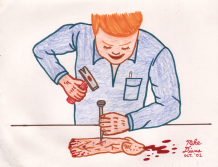




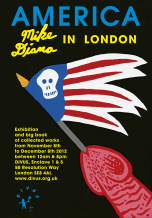
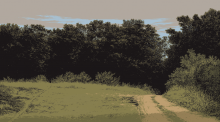
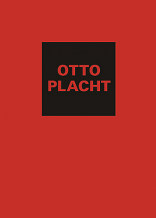
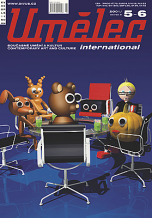


 Potsdamer Str. 161 | Neu Divus in Zwitschermaschine, galerie und buchhandlug in Berlin! | Mit U2 nach Bülowstraße
Potsdamer Str. 161 | Neu Divus in Zwitschermaschine, galerie und buchhandlug in Berlin! | Mit U2 nach Bülowstraße
Kommentar
Der Artikel ist bisher nicht kommentiert wordenNeuen Kommentar einfügen